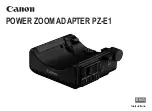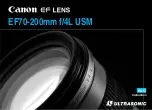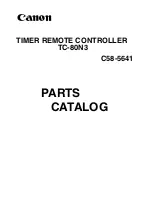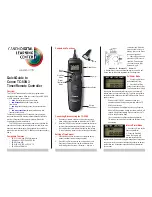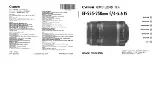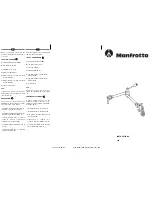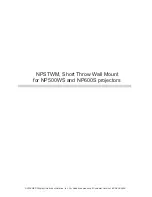
1130CC.COM / 1250CC.COM
22
V-Gauge Lite Manual V1.2
© 2008 Cliftech Design
If the user chooses not to use the pre-installed plug (for permanent mounting, etc.), the gauge
needs to be connected to a circuit on the bike that is switched and fused. The accessory circuit
(orange/white wire) is the best choice. Table II shows the color codes on the gauge matched to
the colors to which they should be connected in the wiring harness on the bike. A convenient
place to pick up the wires for splices is in the stock instrument cluster wiring harness. Note
that there is a small ferrite core installed on the cable near the Deutsch connector. This should
remain on the cable, even in hard-wired installations, since it helps to reduce voltage transients
from the high-voltage ignition system.
Description V-Gauge
Lite
V-Rod
Ground Black Black
Voltage Red
Orange
/
White
Serial bus
White
Light Green / Violet
Table II
– Wiring color codes. For the multi-color wires, the first is the wire color and the second is the
stripe color.
Mounting the gauge
The V-Gauge Lite is supplied with a short length of self-adhesive Velcro that can be used to
mount the lightweight instrument at any convenient and visible location on the front of the
motorcycle. Since the gauge is so light, it does not require a completely flat surface for secure
attachment. I prefer to attach the “fuzzy” portion of the strip to the gauge since it is less
prone to stick to unwanted surfaces (the inside of a jacket pocket, for example) when it is not
installed on the bike. Figure 33 shows the installation used for the prototype on a VRSCR Street
Rod during the first year of testing. This handlebar location provides good visibility as well as
easy access to the lower button (to change run screens) by the rider’s left thumb.
Figure 33
– Possible installation location for the V-Gauge Lite using the included Velcro attachment
strips.
Other possibilities for mounting the gauge are limited only by the creativity of the installer.
The circuit board is not large and is easily removed from the plastic housing if a more
permanent and attractive solution is desired. It might even be possible to carefully grind away
the unused corners of the rectangular printed circuit board and insert the gauge into a standard


















